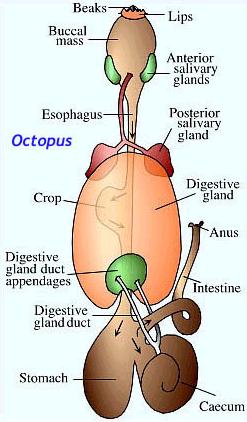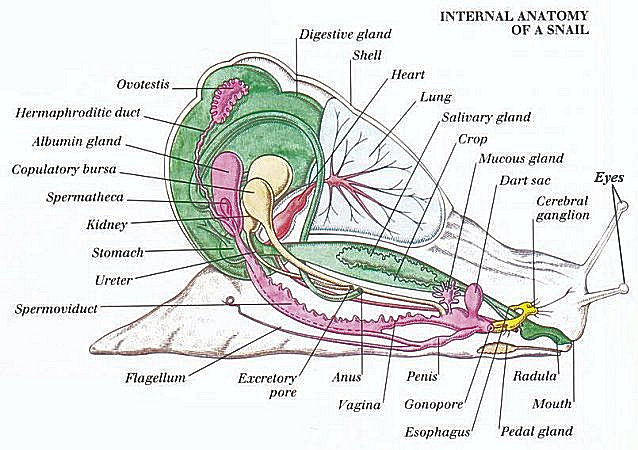 |
Endocrine (neuro) - Hormone production is not well documented in mollusks other than gastropods and cephalopods. Antagonistic neurohormonal control of reproductive activity and metabolic processes is performed in the cephalopods through optic glands. The anterior salivary gland secrets the clear liquid (of water, mucin, protein, and enzymes) into the mouth. It moistens food and starts the breakdown of starches. The posterior salivary gland (poison gland) produces venom to paralyze prey. The oviducal gland surrounding the end of the primary oviduct is responsible for secreting some of the external coatings over spawned eggs. In octopuses it also acts as a spermatheca.
Excretory - Excretory functions are carried out by a pair of nephridia (kidneys), tubular structures that collect fluids from the coelom and exchange salts and other substances with body tissues as the fluid passes along the tubules for excretion. The nephridia empty into the mantle cavity.
Immune - Similar to the bivalve's.
Musculo-skeletal - An octopus has a soft body, eight arms, and pouch-shaped. Each arm has two rows of suction cups. If it loses an arm, it will eventually regrow another one. Octopuses move by pulling themselves along with their arms or by forcibly expelling water through the funnel or siphon. They eject dark ink from the ink sac to escape danger. They can also change color according to mood and environ- ment, sometimes exhibiting rapid waves of color changes that sweep over the body. Cuttlefish has internal skeleton; it seems the skin is dotted with light sensors that help to control camouflage.
|






